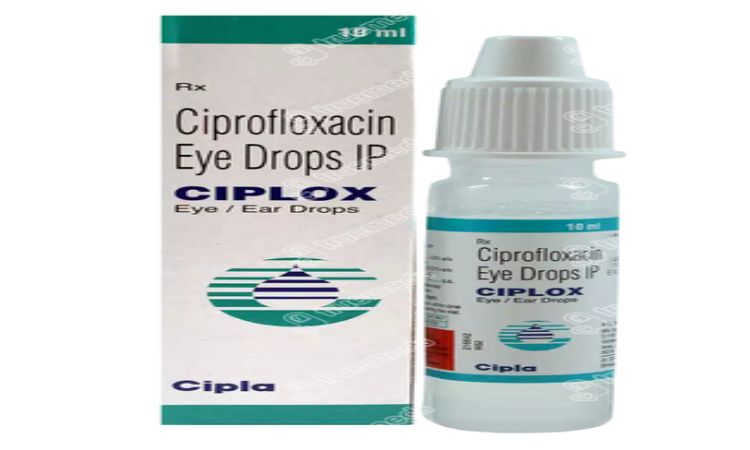Introduction
Eye drops are special liquids for your eyes. They are like medicine or soothing liquids you put directly into your eyes. These drops help with eye problems like dryness, allergies, infections, or glaucoma. Understanding eye drops uses is essential for effective ocular care.

What Are the Different Types, and Also Mention Eye Drops Uses?
Eye drops come in various types, each designed to address specific eye conditions. The main types include:
1. Lubricating Eye Drops
- Purpose: These drops provide moisture to relieve dry eyes, a common issue due to age, environmental conditions, or extended screen time.
- Usage: Eye drops for dry eyes are formulated to provide relief and moisture to alleviate discomfort.
2. Allergy Eye Drops
- Purpose: Formulated with antihistamines, these drops alleviate itching and redness caused by allergic reactions to pollen, pet dander, or other allergens.
- Usage: Seasonal allergy sufferers find relief from symptoms like itchy, watery eyes.
3. Antibiotic Eye Drops
- Purpose: Prescribed to treat bacterial eye infections, such as conjunctivitis (pink eye), by eliminating the bacteria causing the infection.
- Usage: Following a healthcare professional’s prescription, these drops are applied to the infected eye.
4. Antiviral Eye Drops
- Purpose: Combat viral eye infections, including those caused by the herpes simplex virus.
- Usage: Prescribed for specific viral infections, especially in cases of herpetic keratitis.
5. Anti-inflammatory Eye Drops
- Purpose: Designed to reduce eye inflammation, particularly useful for conditions like uveitis.
- Usage: Prescribed by eye care specialists to alleviate swelling and discomfort associated with inflammation.
6. Glaucoma Eye Drops (Anti-glaucoma Medications)
- Purpose: Lower intraocular pressure, a key factor in managing glaucoma and preventing optic nerve damage.
- Usage: Regular application helps control eye pressure and prevent glaucoma progression.
7. Mydriatic Eye Drops
- Purpose: Dilate the pupil, facilitating eye examinations and enabling a better view of the retina and other internal eye structures.
- Usage: Administered by healthcare professionals before specific eye exams or procedures.
8. Corticosteroid Eye Drops
- Purpose: Address severe eye inflammation caused by uveitis or post-eye surgery inflammation.
- Usage: Prescribed for a limited duration under professional supervision due to potential side effects.
9. Artificial Tears
- Purpose: Mimic natural tears to provide additional lubrication for dry eyes.
- Usage: Frequent application helps alleviate dryness and maintain ocular comfort.
10. Miotic Eye Drops
- Purpose: Constrict the pupil, often used for specific eye conditions or before certain eye surgeries.
- Usage: Administered as directed by eye care specialists for therapeutic or preparatory purposes.
11. Cycloplegic Eye Drops
- Purpose: Temporarily paralyse the ciliary muscle, facilitating certain eye exams or addressing specific eye conditions.
- Usage: Administered by healthcare professionals based on examination requirements.
How to Apply the Eye Drops
Applying eye drops correctly is crucial for their effectiveness. Here’s a step-by-step guide on how to apply them:
- Wash Hands: First, thoroughly wash your hands with soap and water to prevent contamination.
- Tilt Your Head Back: Tilt your head backwards and find a comfortable position, whether sitting or lying down.
- Create a Pocket: Use one hand to slowly pull down the lower eyelid, thus creating a small pocket between the eyelid and the eye.
- Hold the Dropper: With the other hand, hold the eye drop bottle above the eye, ensuring it doesn’t touch the eye or eyelashes.
- Look Up: Focus your gaze upward or at a fixed point to avoid blinking while applying the drops.
- Instil the Drops: Squeeze the recommended number of drops into the eye pocket created by pulling down the lower eyelid. Be precise and avoid unnecessary contact.
- Close Your Eyes: Close your eyes gently to allow the drops to spread across the eye’s surface.
- Apply Gentle Pressure: Use clean tissue or the corner of a clean cloth to apply delicate pressure to the inner corner of the eye. This helps prevent the drops from draining into the tear duct.
- Keep Eyes Closed: Keep your eyes closed briefly, allowing the medication to be absorbed.
- Avoid Blinking: Refrain from blinking excessively immediately after applying the drops to ensure optimal absorption.
- Repeat if Necessary: If multiple eye drops are prescribed, wait a few minutes before applying the next set.
- Recap the Bottle: Recap the eye drop bottle securely to prevent contamination.
What Are the Benefits of Eye Drops?
Eye drops offer various benefits, including relief from dryness, redness, and itching. They are crucial in treating eye infections, reducing inflammation, and managing conditions like glaucoma. Lubricating and artificial tear drops provide comfort for dry eyes. Cleaning eye drops are designed to remove debris and irritants, promoting clear vision and comfort. However, it’s essential to use them as prescribed for optimal results.
Are There Any Side Effects of Eye Drops?
Currently, many people prefer to order eye drops from online medical store. So we recommend not to order without consultation of your doctor. Eye drops, while beneficial, may have potential side effects. These include temporary stinging or burning, redness, blurred vision, or allergic reactions. Prolonged or severe side effects should be reported to a doctor promptly. Always follow prescribed instructions and consult your eye care specialist if you have concerns about side effects.
Do Eye Drops Interact With Other Medicines?
Yes, some eye drops can interact with other medicines. It’s crucial to inform your doctors about all medications, including over-the-counter (OTC) medicines and supplements, to avoid potential interactions. Certain eye drops, especially those containing medications like beta-blockers or prostaglandin analogues, may have systemic effects and interact with other medications.
What Precautions Need to Be Taken While Using Eye Drops?
When using eye drops, consider the following precautions:
- Clean Hands: Wash hands thoroughly before applying eye drops to prevent contamination.
- Avoid Touching The Tip: Do not touch the tip of the eye drop bottle or dropper to prevent contamination.
- Check Expiration Date: Ensure the eye drops are within their expiration date for efficacy and safety.
- Follow the Prescribed Dosage: Adhere to the prescribed regimen provided by your healthcare professional.
- Wait Between Drops: If multiple drops are prescribed, wait a few minutes between different medications.
- Remove Contact Lenses: Remove contact lenses before applying eye drops, if applicable.
- Apply Drops Before Ointments: If using both eye drops and ointments, apply the drops first to allow proper absorption.
- Wait After Applying: Wait a few minutes after applying the drops before blinking or closing your eyes.
- Avoid Contaminating Tip: Avoid touching the tip of the eye drop container with your hands or any surface.
- Report Side Effects: Report any unusual or severe side effects to your healthcare provider promptly.
- Inform About Allergies: Inform your healthcare professional about allergies to medications or preservatives.
- Keep Eyes Closed: Keep your eyes closed briefly after applying drops to enhance absorption.
Store Properly: Store eye drops according to the instructions, usually at room temperature.

